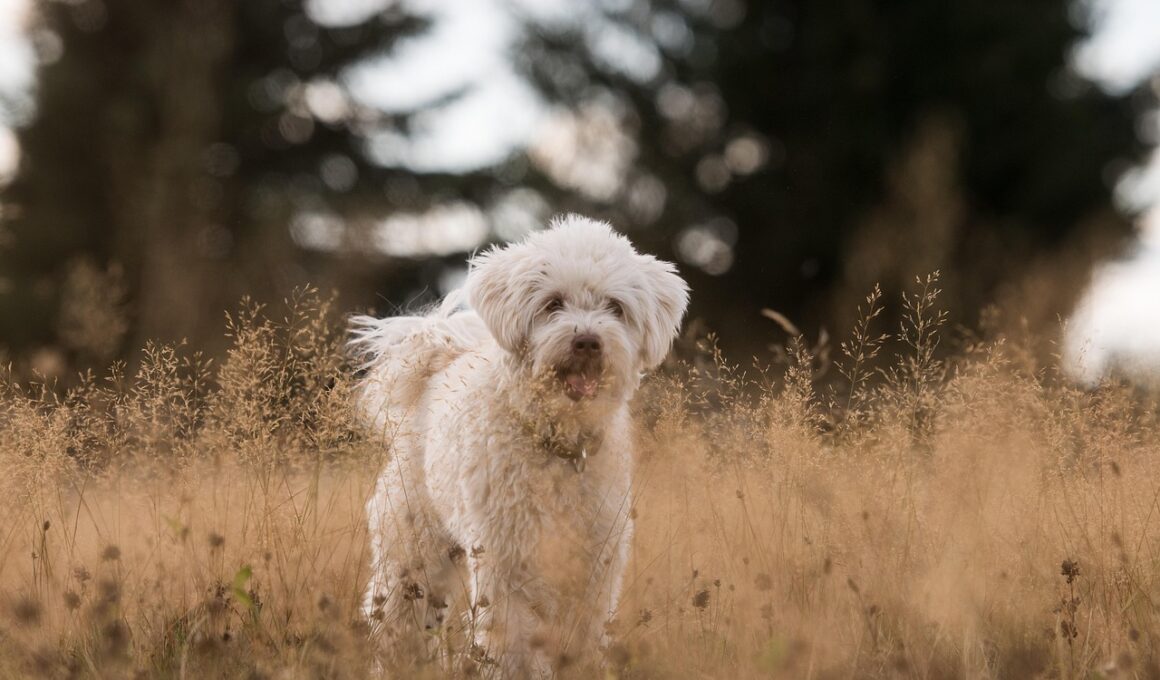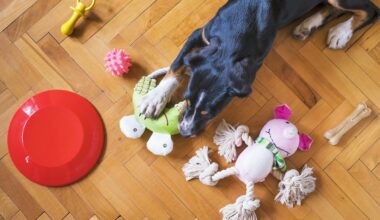How to Manage and Correct Destructive Chewing Behaviors
Destructive chewing is a common issue with many dogs. This behavior can lead to damage in the home, as puppies and adult dogs alike chew furniture, shoes, and other household items. Understanding why dogs engage in destructive chewing is crucial for management. Often, dogs chew out of boredom, anxiety, or even teething. Addressing the root causes of this behavior is essential for effective correction. Owners should provide appropriate chew toys and engage in regular exercise to keep their dogs active and distracted. It is vital to select the right toys that are safe and durable, as this can help minimize destructive behaviors. For puppies, learning appropriate chewing habits can take time and patience. Consistency in training is key to ensuring the correct behaviors develop over time. Behavioral training methods can make a significant difference when addressing chewing issues. In many cases, positive reinforcement strategies can be employed, helping reinforce good behaviors while discouraging unwanted habits. Monitoring your dog closely during training can result in better outcomes and a stronger bond between pet and owner, ultimately leading to a happy home for both.
Monitoring your dog and correcting unwanted chewing behavior requires a proactive approach. Setting clear boundaries for acceptable chewing is one way to guide your dog effectively. Training techniques should include redirecting the attention of your dog to appropriate chew items when they attempt to chew something they shouldn’t. If your dog attempts to chew on furniture, gently remove them from the area and provide a toy instead. Being firm but gentle in your corrections can prevent fear-based responses, which could further complicate the issue. Additionally, it is essential to reward your dog when they engage with the correct toys. Using positive reinforcement methods, such as treats or praise, can motivate your dog to choose the right options. Make sure to have a variety of toys available so your dog doesn’t get bored of a single item. Offering different textures and flavors can keep their interest alive. Another factor in maintaining this behavior is the dog’s environment. Securing items that are within reach can help reduce temptation. If your dog is left alone frequently, consider dog-proofing your home to protect your belongings and ensure they remain safe.
Understanding the Causes of Destructive Chewing
Destructive chewing can be a sign of underlying issues. Dogs often chew out of boredom, anxiety, or stress. Understanding these causes can help address the behavior more effectively. For instance, during periods of loneliness, a dog may turn to chewing as a means to cope. This is especially common in dogs that are left alone for long durations. Chewing may provide comfort, and it’s vital to identify triggers that lead to this behavior. Anxiety-related chewing is particularly concerning, as it can cause health issues if not dealt with properly. It’s essential to be observant of the signs that may indicate anxiety, such as pacing, whining, or trying to escape. Also, teething can cause puppies to chew excessively as they seek relief from sore gums. Providing suitable chew toys designed for puppies can help in this phase. Taking time to train and socialize your dog can mitigate these behavioral issues. Activities like obedience training or agility classes can provide mental stimulation and help build confidence, ultimately reducing the urge to chew destructively. Knowing the causes will equip dog owners with the knowledge needed to tackle the behavior proactively.
Environmental enrichment plays a significant role in managing chewing behaviors. Providing your dog with stimulating activities can keep them occupied and reduce the urge to chew on inappropriate items. Consider incorporating mental challenges into your dog’s routine, such as puzzle toys, which can engage their minds effectively. These toys typically require dogs to solve challenges in exchange for treats. Such mental stimulation can be beneficial in alleviating boredom. Regular physical exercise is equally important; a well-exercised dog tends to be more relaxed and less likely to chew destructively. Going for walks, playing fetch, or engaging in other interactive games can help fulfill their energy needs. Another aspect of environmental enrichment includes creating a designated play area with safe and appropriate toys. This minimizes access to forbidden items and teaches the dog what is acceptable to chew. Make use of various textures and shapes for toys to maintain their interest. Social interactions with other dogs can also provide essential stimulation, so consider dog parks or playdates if possible. Overall, creating a balanced environment can drastically improve your dog’s behavior, ensuring a harmonious household.
Training Techniques to Curb Destructive Chewing
Training your dog to stop destructive chewing involves various strategies and patience. Consistent reinforcement of positive behavior is paramount. Start by teaching your dog the command “leave it.” This command can serve as a powerful tool when you catch them attempting to chew on inappropriate items. Once they understand the command, redirect them to a suitable chew item. Reward them with praise or treats when they comply, reinforcing good behavior. Negative reinforcement should be used sparingly. Instead, focus on removing temptations and redirecting their energy to acceptable toys. Training sessions should be kept short but frequent, allowing your dog to absorb the information without becoming overwhelmed. Engaging in activities that stimulate both their mind and body will contribute to their training success. Furthermore, be sure to schedule playtime and bond with your dog, as this can enhance training efficiency. Remember, every dog learns at its own pace, so exercise patience throughout the process. If you encounter difficulties, consider consulting with a professional dog trainer. These experts can provide tailored advice, making the training experience smoother and more effective.
If destructive chewing has become a severe issue, it’s crucial to consider consulting a veterinarian or a certified dog trainer. Sometimes, underlying health issues may exacerbate chewing behaviors. A vet can evaluate whether anxiety, pain, or other health concerns are the root cause. If behavioral methods are not yielding the desired results, a professional might recommend additional training techniques or therapies. They can help devise a customized strategy suited to your dog’s needs. Additionally, medication may be an option if anxiety is determined to be the primary cause. In some cases, prescribed medication can alleviate symptoms, enabling better training outcomes. Always approach medication carefully, weighing the benefits against potential side effects. Moreover, attending training classes with your dog can greatly enhance your skills and understanding of dog behavior. These classes often provide socialization opportunities, further contributing to your dog’s emotional stability. Ultimately, addressing destructive chewing behaviors requires a multifaceted approach, combining training, environmental management, and possibly professional intervention when necessary. A holistic intervention plan can help your dog become a well-behaved, happy member of your family.
Conclusion and Final Thoughts
Managing destructive chewing in dogs requires commitment and ongoing effort. Understanding the problem’s root causes and implementing consistent training techniques can lead to significant improvements. Enriching your dog’s environment with mental and physical activities provides distractions that help curb destructive behaviors. Incorporating puzzle toys and regular exercise into their routine can lead to a more relaxed and fulfilled pet. Remember that patience is essential; dogs learn at their own pace, and consistency in training is crucial to achieve lasting results. Don’t hesitate to enlist the help of professionals when necessary, as they can offer valuable insights for specific challenges. Each dog is unique, and it’s important to tailor techniques to fit your dog’s personality. Celebrating small victories during the training process will help maintain motivation for both you and your dog. Providing a loving environment throughout this journey strengthens your relationship with your furry companion. Be sure to celebrate their progress, regardless of how minor it may seem, and remain committed to improving their behaviors. Ultimately, addressing chewing issues will create a happier life for both you and your dog.


